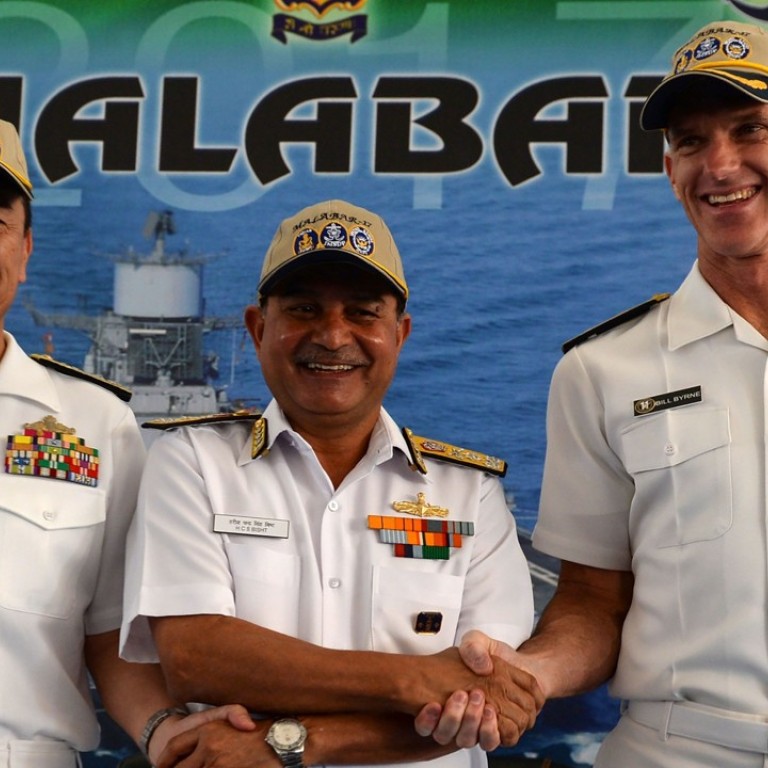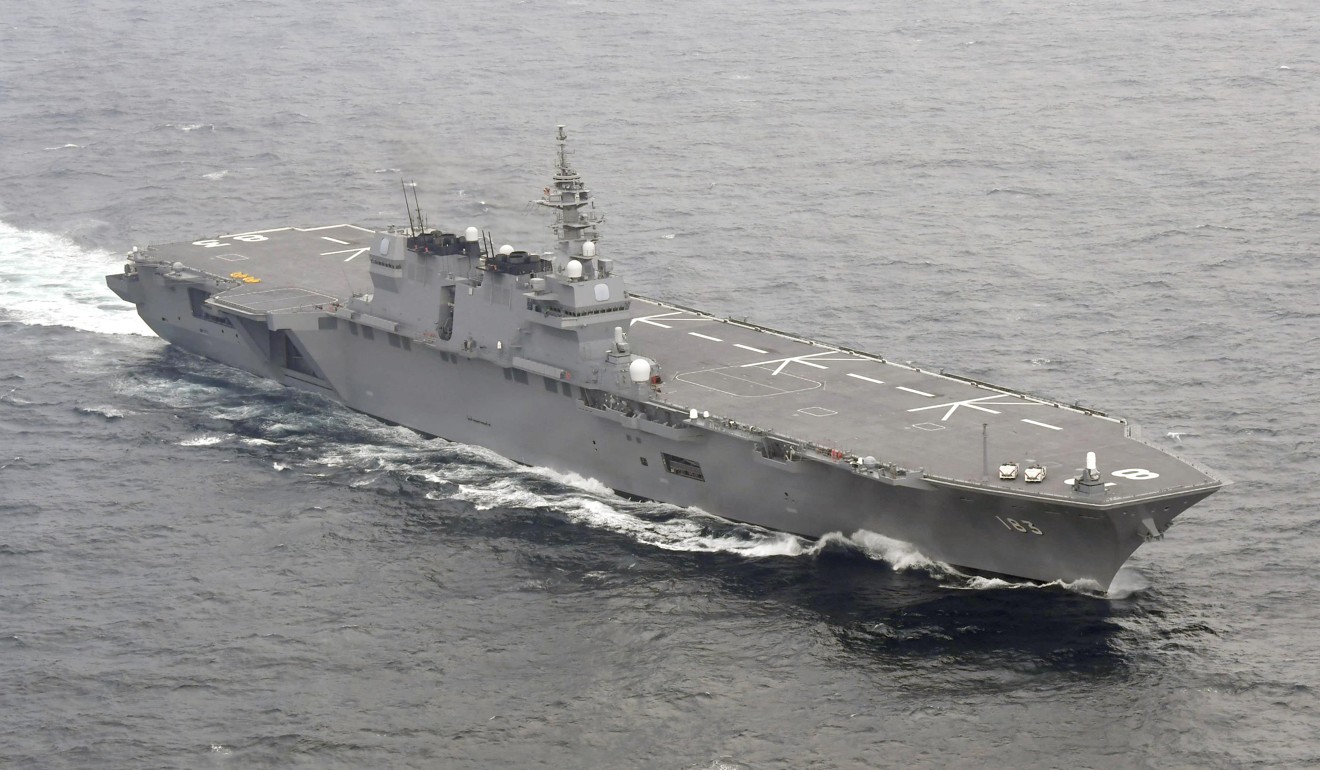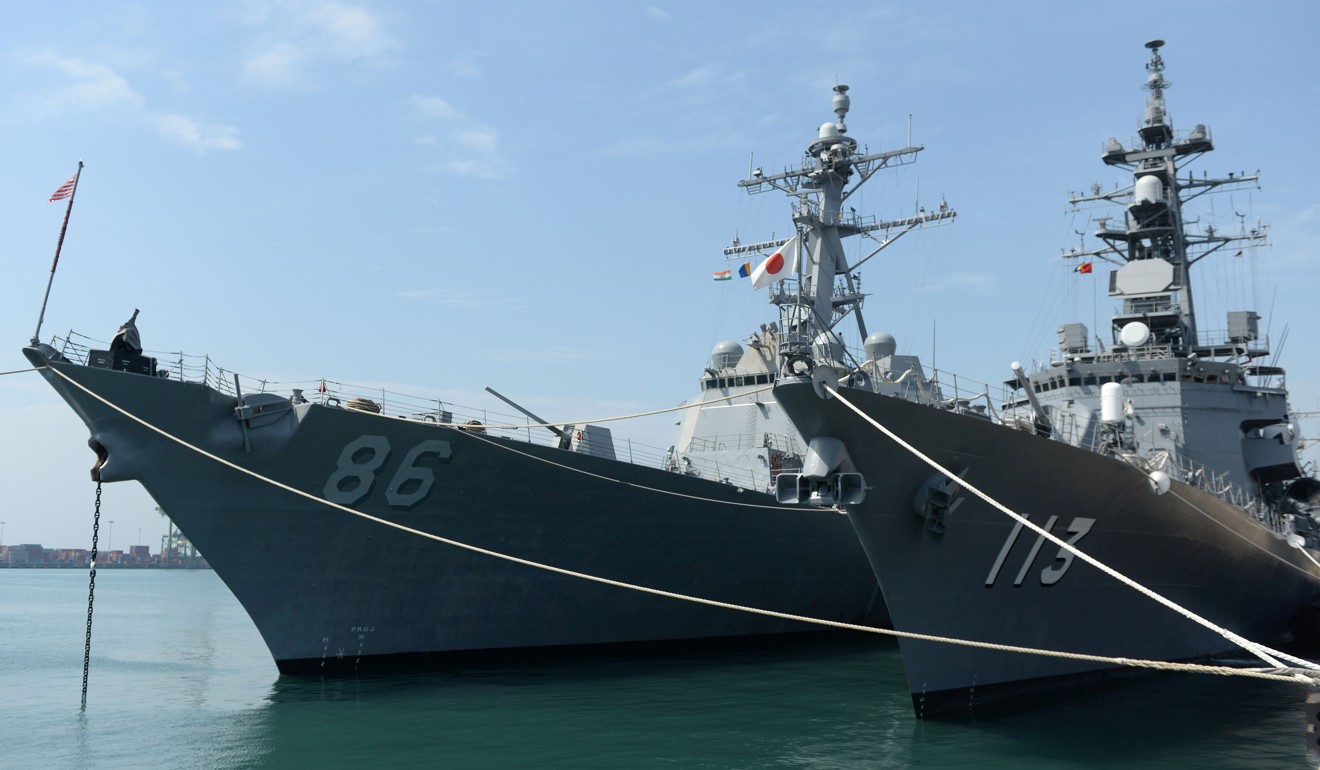
Malabar Exercise: India, US and Japan deploy biggest carriers in show of force against China’s growing naval power
The Malabar exercises involving Japan’s Maritime Self-Defense Force and the US and Indian navies are taking place in the Bay of Bengal and will last until July 17
India began holding naval exercises with the United States and Japan off its south coast on Monday, seeking to forge closer military ties to counter growing Chinese influence in the region.
India has a longstanding territorial dispute with its northern neighbour, which is also expanding its naval presence in the region.
It is the fourth consecutive year Japan’s Maritime Self-Defence Force (MSDF) has taken part in the Malabar Exercise, conducted annually by the US and India in the Bay of Bengal since 1992.
In a statement, the US said the exercises had “grown in scope and complexity over the years to address the variety of shared threats to maritime security in the Indo-Asia Pacific”.

About 20 vessels including the world’s largest aircraft carrier, USS Nimitz, are participating in drills which will last until July 17.
Helicopter carrier Izumo, the biggest Japanese warship since the second world war, and India’s aircraft carrier Vikramaditya are also participating in the exercises.

China has stepped up its activities in the Indian Ocean in recent years, building ports in Sri Lanka, Bangladesh and Pakistan.

Troops from the two nuclear-armed neighbours have for weeks been engaged in a stand-off on a disputed section of land high near what is known as the trijunction, where Tibet, India and Bhutan meet.
China has alleged that the Indian troops are on its soil, but both Bhutan and India say the area in question is Bhutanese territory.
Beijing already claims large swathes of the resource-rich South China Sea and East China Sea, putting it in competition with Japan and other countries in the region.
Additional reporting by Kyodo

.png?itok=arIb17P0)